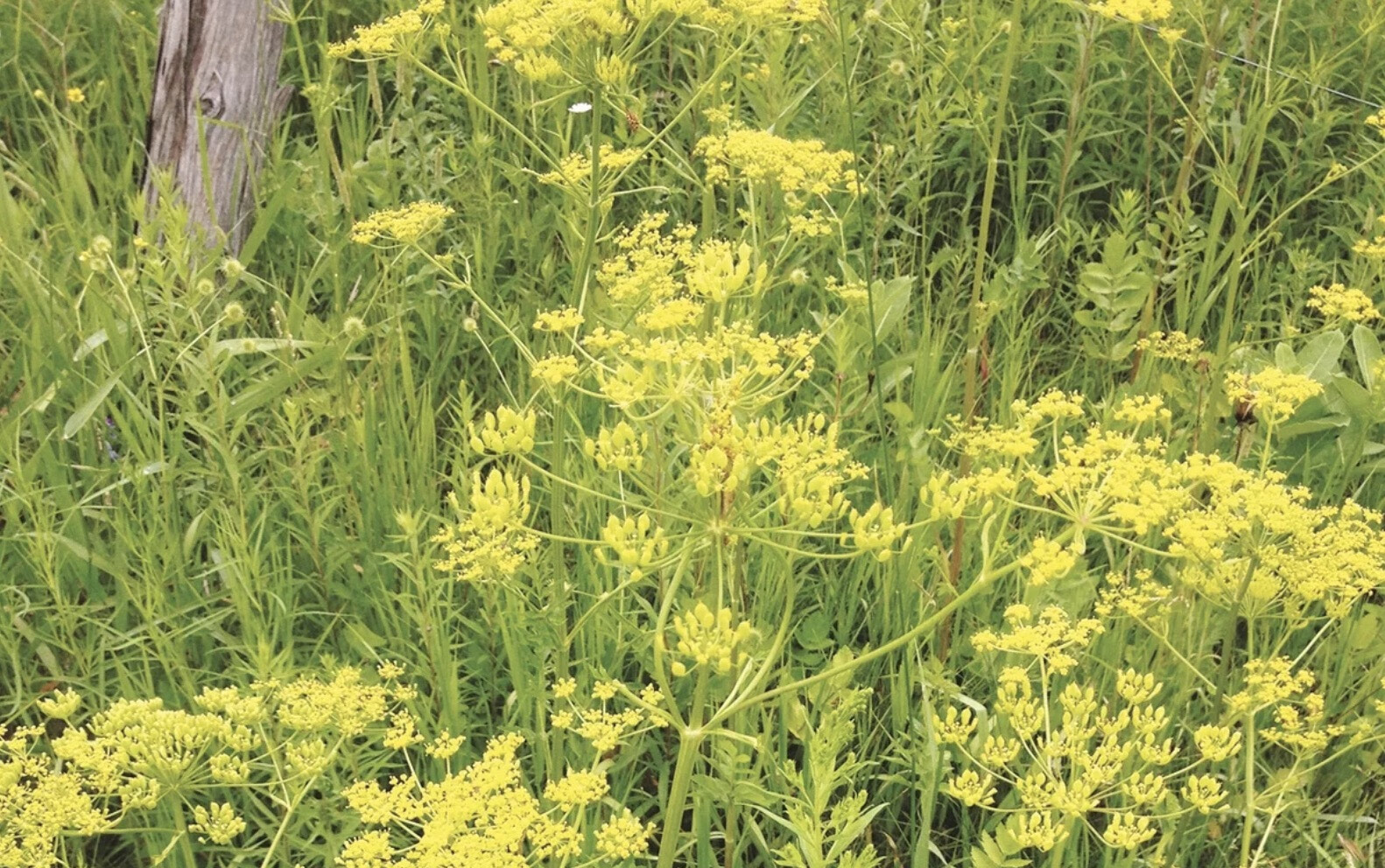C19: Recognize, remove poisonous wild parsnip

Take a drive in the Pontiac and you’ll discover a tall flowering plant which is extremely poisonous to many people – and anecdotally, some animals such as horses. This is wild parsnip, which can cause severe, burning dermatitis. The first step in poison prevention and eradication is correct identification. Wild parsnip description It is a biennial, meaning that wild parsnip takes two years to flower and seed.
The first year, above ground, only a rosette of leaves appears. In year two, wild parsnip grows up to 1.5 metre-tall stalks culminating in umbel-shaped, flowers. The yellow, umbel-shaped blossoms feature a structure resembling multiple tiny umbrellas – slender stalks with little flowers at their ends.
How poisonous?
The weedinfo.ca website describes how toxic this plant is. “After handling the fruit, flowers or leaves of wild parsnip, humans can develop dermatitis. Aided by sunlight, chemicals in the plant cause inflammation of the skin. Mild cases cause burning sensations and reddening of the skin.
Severe cases can lead to blistering and extreme burning sensations. Wild parsnip reactions often present as long spots or streaks on the skin and are commonly confused with the effects of poison-ivy.” (https://bit.ly/2PpyfRt) The dermatological reaction to this plant is called Phytophotodermatitis, where ultraviolet rays activate this reaction 24 hours after exposure.
Three similar poisonous plants in the carrot family grow here in the Pontiac, which all cause Phytophotodermatitis: wild parsnip, cow parsnip, and giant hogweed. Invasive species: Habitat and habits The weed database describes wild parsnips’ habitat which includes “abandoned yards, waste places, meadows, old fields, roadsides and railway embankments”. Wild parsnips’ yellow blossoms are now starting to fruit, where its umbel-shaped flowers produce hundreds of flat, oval seeds from mid July into autumn. Because of the volume of seeds, the plants’ vigorous growth has become seriously invasive. Native species are crowded out – and it’s sad to see farmers’ fields full of it.
Removal First,
know how to identify the plant in its first- and second-year growth.
Second
Wear completely protective clothing. Avoid touching wild parsnip with unprotected skin, so wear gloves, eye protection, long-sleeved shirt and long pants. (And, with tick issues, I promote the use of rubber boots.)
Removal
Ontario’s Invasive Species explains: “If you have small clusters of wild parsnip on your property (fewer than 100 plants), you may be able to manage the plant yourself. Wear protective clothing and dispose of plants carefully, as described below. To remove larger infestations (thousands of plants), you will likely need a professional exterminator and repeated treatments over several years.” (https://bit.ly/3ick3YB)
What have I done
Three actions. First, on July 15th, Eric and I manually removed wild parsnips in the ditch bordering Spiritwood – something we’ve done for the two years after the plants first appeared here. To date, our direct action has prevented the plant from growing in our hayfields and horse paddock, meaning our hay is not contaminated with it. We burn the cuttings in our fire pit (when fires are permitted).
Second, during Covid, I’ve sent three e-mails to my community along the Steele Line. On July 16, my third email alerted my neighbours to the toxicity of wild parsnip and the fact that mid-July was the perfect time to remove them before they seed. I also included a link to a site where photos of the plants are shown, for identification purposes. (invadingspecies.com/wild-parsnip)
Incidentally, after that e-mail, the Municipality of Pontiac cut the verge of our ditches – unfortunately, this will likely serve to spread wild parsnip. After they’d mowed, I walked alongside the shoulder, and voilà: the profusely seeding flowers now have a perfect sheltered habitat in which to grow.
Third: I am writing this column to inform as many of you as possible.
Unsurprising to those of you who know us, there’s one control we’ve not utilized. However, you may want to know that glyphosate kills wild parsnip.
Final note If nothing else, please identify wild parsnip, and if you go near it/try to remove it, cover yourself. Katharine Fletcher is a freelance writer and artist.
She welcomes your suggestions/responses: fletcher.katharine@gmail.com

